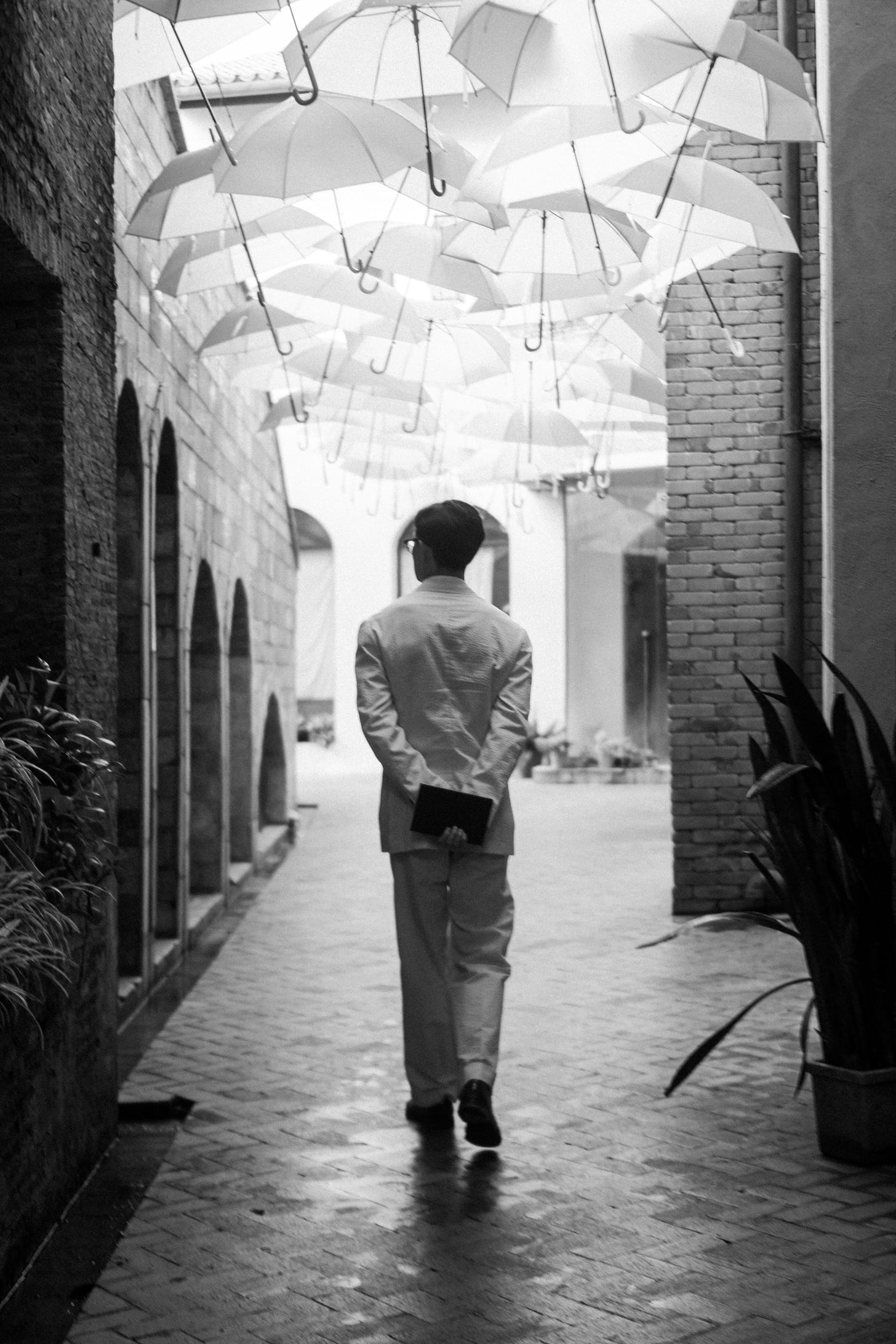The Failed Suit
When the Sacred Garment of the 21st Century Refused to Behave
For as long as I can remember, the perception of the suit that society poured into me was simple and universal: a suit is formal. It belongs to the politician signing documents behind a podium, the groom standing under floral arches, the consultant whose PowerPoint slides follow him like shadows. A suit was never merely a garment; it was a code, a uniform, a signal of seriousness. And I accepted this without question—that wearing a matching jacket and trousers made from the same fabric was an act reserved for specific, sacred circumstances. But what happens when that code no longer matches the world we live in? What happens when the suit steps outside its assigned role and fails, almost intentionally, to fulfill the function society expects of it?
Modernity, especially in a tropical metropolis like Bangkok, has rewritten the rules of dress. Here, a suit—any suit—is a spectacle. Wear one on a weekday afternoon and you are immediately out of sync, a man performing a ritual in a world that no longer practices it. People look at you not with admiration but with a silent question: why are you so dressed up? In a city where the security guard at the luxury mall and the concierge in a five-star hotel are among the few who wear jackets daily, a man who chooses a suit for living, not for ceremony, becomes an anomaly.
This tension, quietly internal yet socially visible, sparked a question I couldn’t let go of: if elegance is defined as ease—ease from within, radiating outward—how can one be elegant in a society where the suit, the very symbol of elegance, creates the opposite of ease? And deeper still: if a suit has become synonymous with formality, what if I strip away the formality entirely? What if I build a suit that is not allowed to perform the job of being a suit?
Keep reading with a 7-day free trial
Subscribe to Renaissance Flâneur to keep reading this post and get 7 days of free access to the full post archives.




